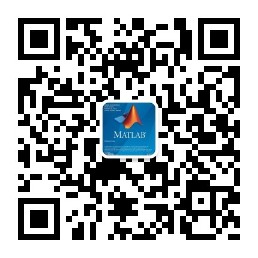博文
[转载]【无人机】【2017.09】基于覆盖模型的无人机空中监视的实时部署
||
本文为加拿大温莎大学(Tong Zhang)的硕士论文,共79页。
本文探讨了将覆盖模型应用于无人机空中监视问题的可行性。空中监视的目的是利用传感器覆盖任务区域,以获取有关该区域的信息,例如环境研究。与静态传感器相比,商用无人机具有更高的机动性。由于静态传感器的感应范围有限,因此无法使用它们覆盖足够的任务区域。装备机载传感器的无人机可用于监视和存储数据,以获取任务区域的更详细信息。传感器获取的数据可用于开发无人机导航的自主控制算法。然而,也存在一些不可避免的因素会缩短无人机的飞行时间。例如,考虑到无人机的最大有效载荷,无人机电池通常最多能维持30分钟,因为无人机不能太大。预先设计一架无人机的飞行轨迹或多架无人机的部署位置,对提高无人机监视效率具有重要意义。
覆盖强度模型将传感器的参数转化为几何约束,利用数学方程来表示传感器,并利用凸优化来寻求多个传感器的布置,以最佳的视觉和图像质量覆盖任务区域。覆盖模型由三个不同的模型组成:传感器模型、环境模型和任务模型。在这三种模型的基础上构造凸函数,并将其优化到最小,以获得最佳部署。在这个应用中也可以使用自主式无人机。因此,控制算法也是本文的一部分。与室内无人机的应用不同,只有GPS可以对无人机的运动进行定位和导航。提出了一种仅基于GPS的黑盒控制方法。
本文的贡献主要体现在两个方面。首先,将覆盖强度模型应用于移动传感器、无人机,提高了无人机对任务区域进行测量的效率。采用这种方法,可以减少硬件需求和时间,达到良好的效果。第二,这是一个为该应用定制的自主无人机。因此,在这个应用中介绍了设计这种无人机的每一个细节,包括所有的硬件和软件。在论文的后续部分介绍了覆盖强度模型,介绍了无人机的仪表和控制算法。给出了应用覆盖强度模型的实验过程和结果。
This thesis assesses the feasibility ofapplying coverage model to the problem of using unmanned aerial vehicles (UAVs)for aerial surveillances. The purpose of aerial surveillance is using sensorsto cover the task area to obtain the information regarding to this area, suchas environmental study. Comparing to static sensors, business purposes UAVshave higher mobility. Since static sensors have limited sensing range, it isnot possible to use them to cover the task area. UAVs with sensors onboard canbe used for surveillance and save the data to obtain more detailed informationof the task area. The data retrieved by the sensors can be used for developingautonomous control algorithms for navigation of the UAV. However, there aresome inevitable factors that shortens the flight time of the UAV. For example,considering the maximum payload of the UAV, the battery of UAV can usually lastat most 30 minutes since it cannot be very large. It is very important toimprove the efficiency of UAV surveillance by pre-designing the flight path forone UAVs or deployment positions for multiple UAVs. The coverage strength modelconverts parameter of sensors into geometrical constraints, which allows usingmathematical equations to represent the sensor and using convex optimization tofind deployment of multiple sensors to cover the task area with best visualcoverage and image quality. The coverage model consists of three differentmodels: sensor model, environmental model, and task model. The convex functionis constructed based on the three models and optimized to the minimum to getthe best deployment. It is also possible to use autonomous UAV in thisapplication. Thus, the controlling algorithm is also a part of this thesis.Different from application of indoor UAVs, only GPS can be used for positioningand navigating the movement of the UAV. A black box control only based on GPSis presented. The contributions of this thesis are in two perspectives. First, itapplies the coverage strength model to mobile sensors, UAVs. It improves theefficiency of using UAVs to survey the task area. With the method applied, itmay need less hardware requirements and time to achieve good result. Second, itis an autonomous UAV that is built for this application. Therefore, everydetail of building this drone is introduced in this application including allhardware and software details. In the following parts of the thesis, thecoverage strength model is introduced. The instruments and the controllingalgorithm of the UAV are presented. The experimental procedure and the resultof applying the coverage strength model are shown as well.
1. UAV空中监视
2. 覆盖强度模型与优化方法
3. 硬件与软件
4. 实验
5. 结果与分析
6. 结论与未来工作展望
附录A 设备
附录B 源代码
更多精彩文章请关注公众号:
https://blog.sciencenet.cn/blog-69686-1250550.html
上一篇:[转载]【电信学】【2018.11】多种场景下5G蜂窝无线网络的部署分析
下一篇:[转载]【计算机科学】【2014.09】激光雷达与图像点云比较